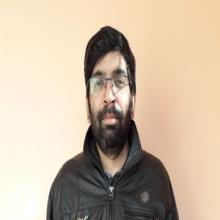
Kapil Juneja
Work place: Department of Computer Science and Engineering, University Institute of Engineering and Technology, Maharshi Dayanand University, Rohtak, Haryana,124001, India
E-mail: kapil.juneja81@gmail.com
Website:
Research Interests: Data Structures and Algorithms, Image Processing, Network Security, Image Manipulation, Image Compression
Biography
Kapil Juneja is currently doing PhD in computer science and engineering at the M.D. University, Rohtak, Haryana, India. His research interests include image processing, biometrics, pattern recognition, computer networks, software engineering and machine learning. He is currently doing research on various image, network security and data classification applications.
Author Articles
Multi Featured Fuzzy based Block Weight Assignment and Block Frequency Map Model for Transformation Invariant Facial Recognition
DOI: https://doi.org/10.5815/ijigsp.2018.03.01, Pub. Date: 8 Mar. 2018
Misalignment of the camera, some jerk during capture is natural that results some tilt or geometric transformed photo. The accurate recognition on these misaligned facial images is one of the biggest challenges in real time systems. In this paper, a fuzzy enabled multi-parameter based model is presented, which is applied to individual blocks to assign block weights. At first, the model has divided the image into square segments of fixed size. Each segmented division is analyzed under directional, structural and texture features. Fuzzy rule is applied on the obtained quantized values for each segment and to assign weights to each segment. While performing the recognition process, each weighted block is compared with all weighted-feature blocks of training set. A weight-ratio to exactly map and one-to-all map methods are assigned to identify overall matching accuracy. The work is applied on FERET and LFW datasets with rotational, translational and skewed transformation. The comparative observations are taken against KPCA and ICA methods. The proportionate transformation specific observations show that the model has improved the accuracy up to 30% for rotational and skewed transformation and in case of translation the improvement is up to 11%.
[...] Read more.Other Articles
Subscribe to receive issue release notifications and newsletters from MECS Press journals